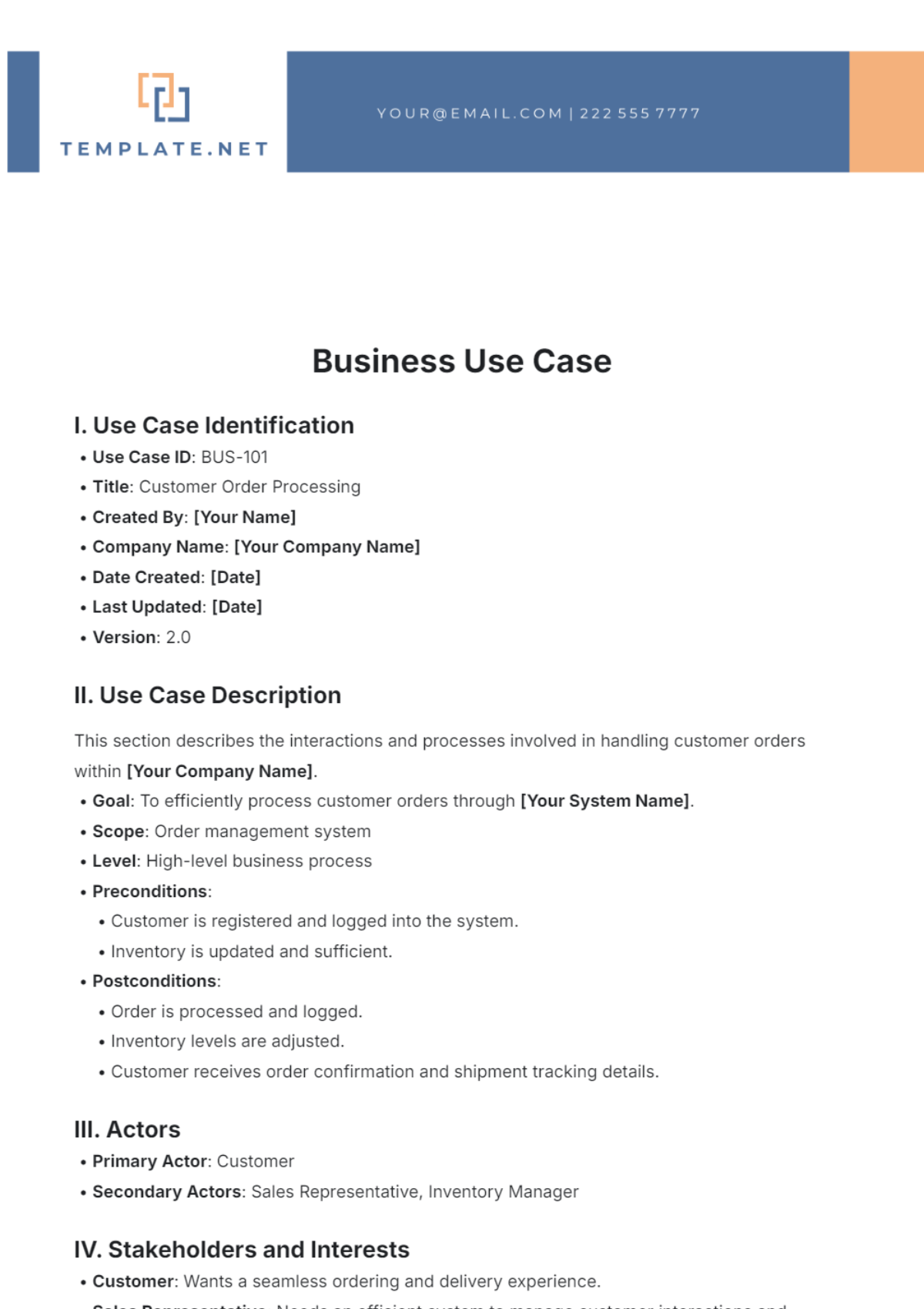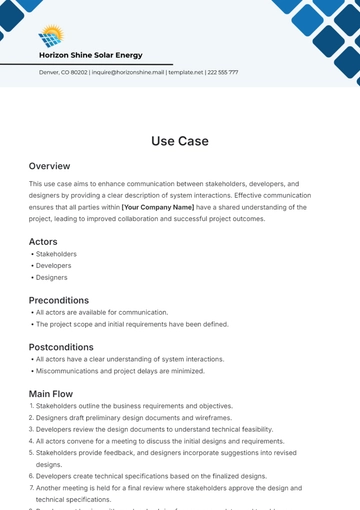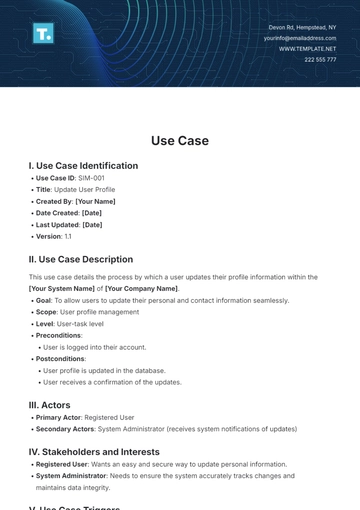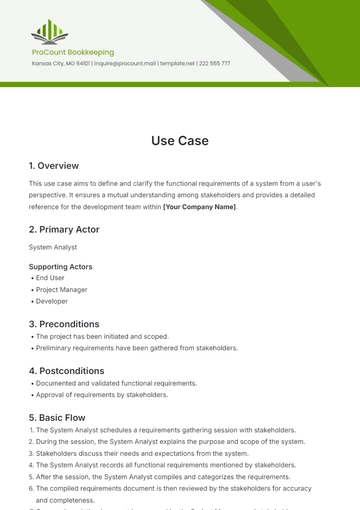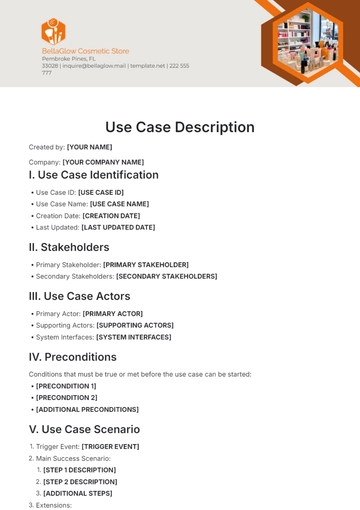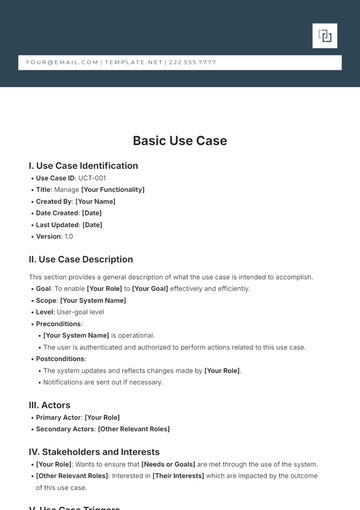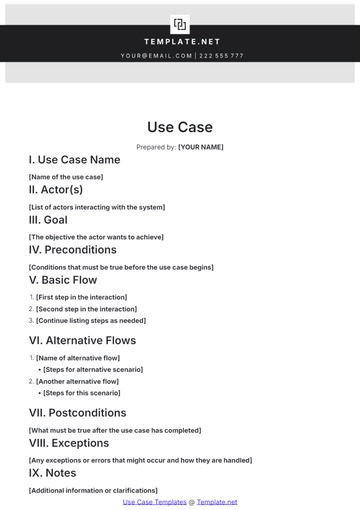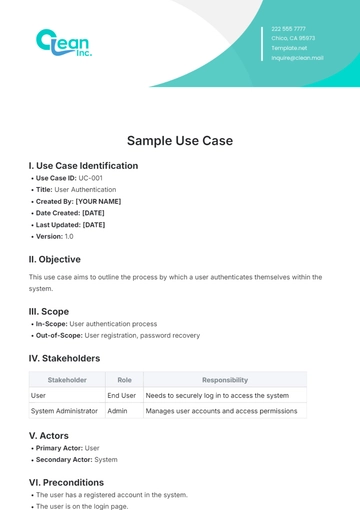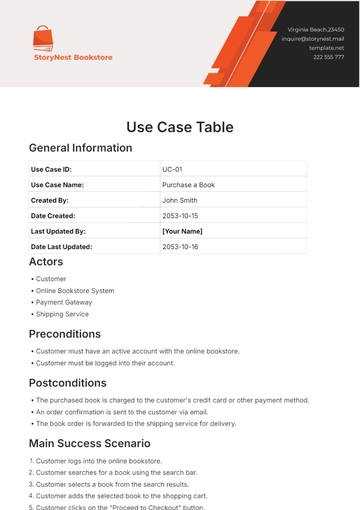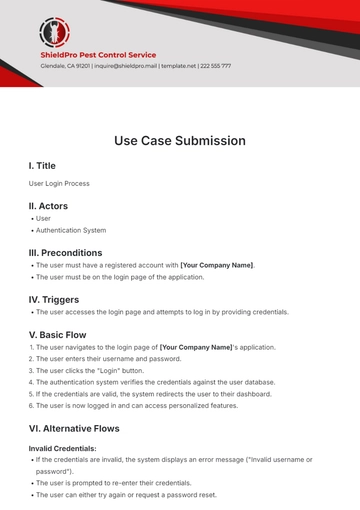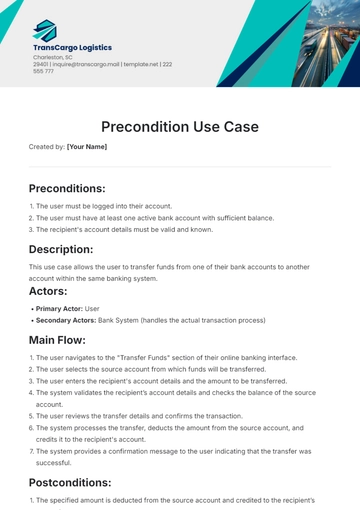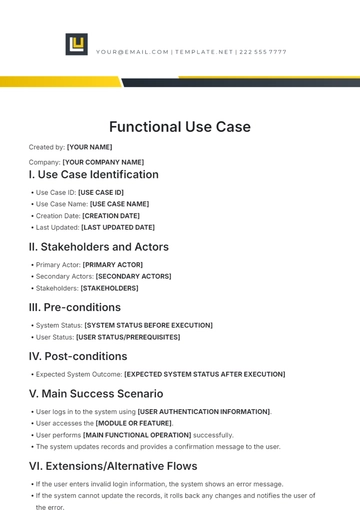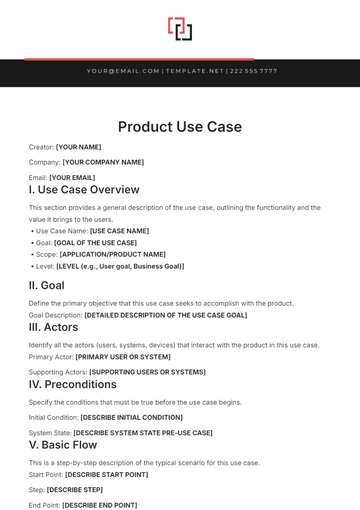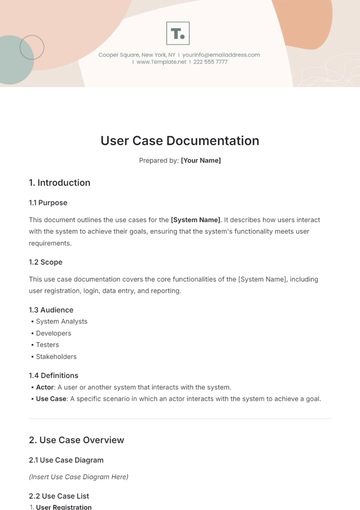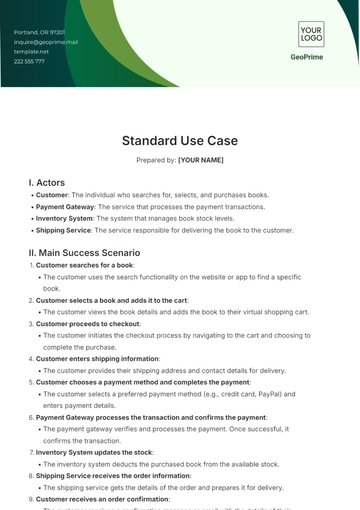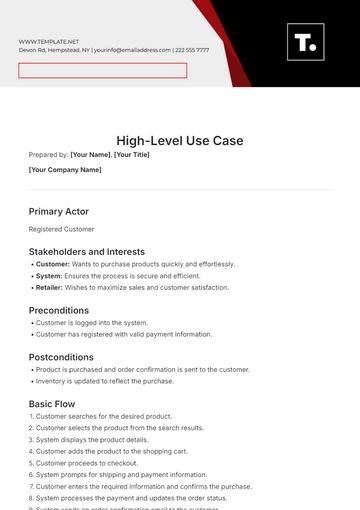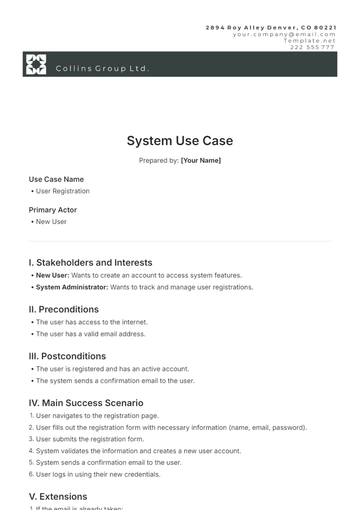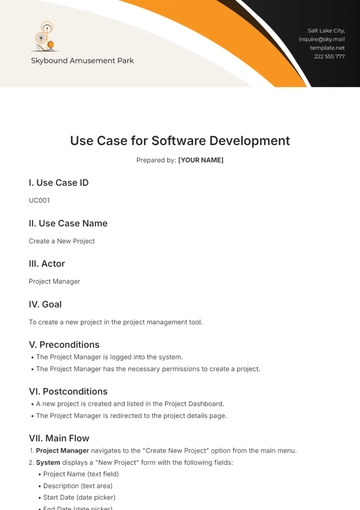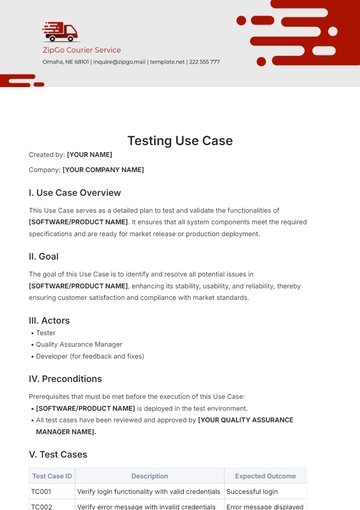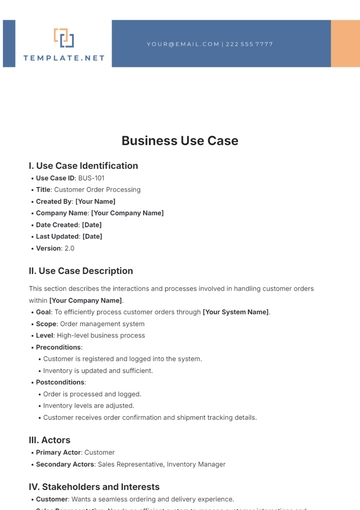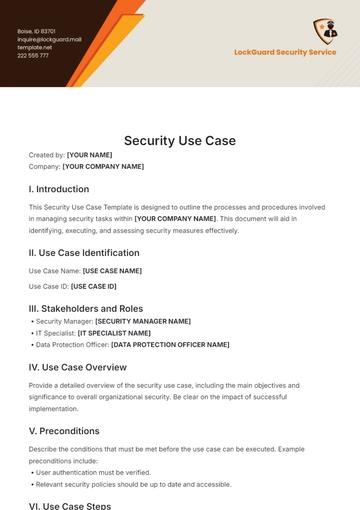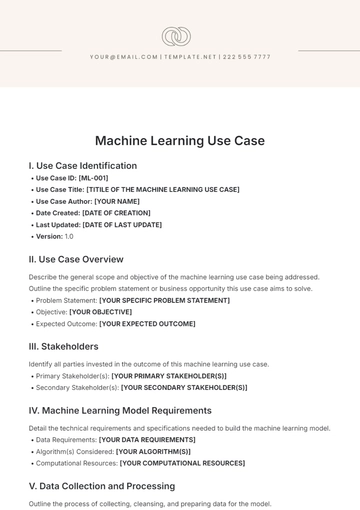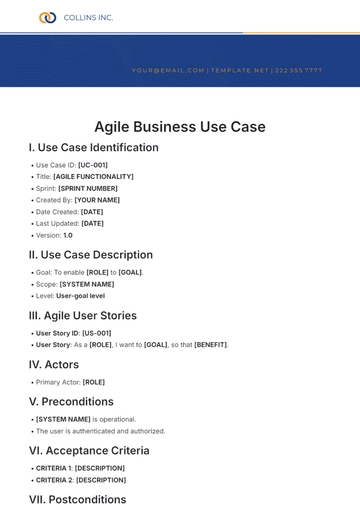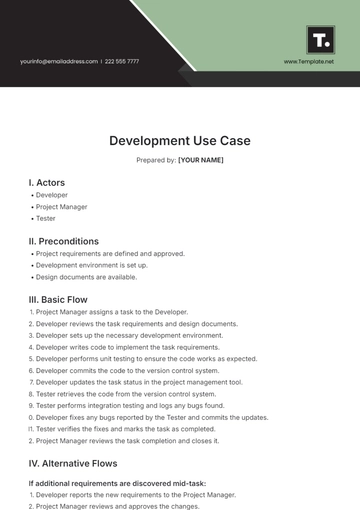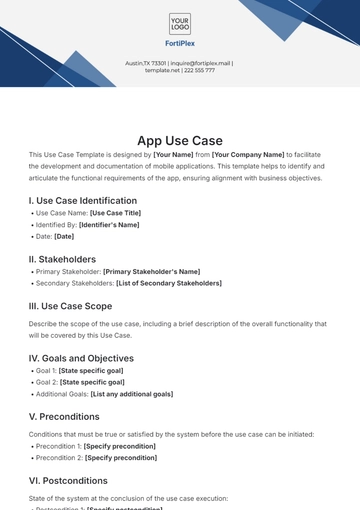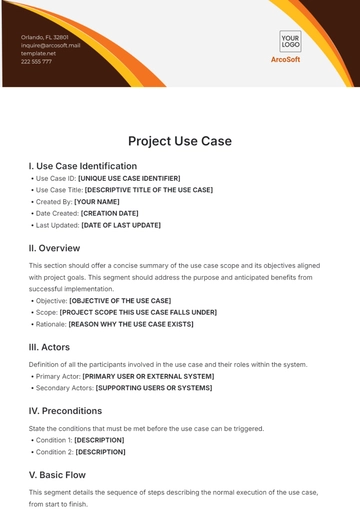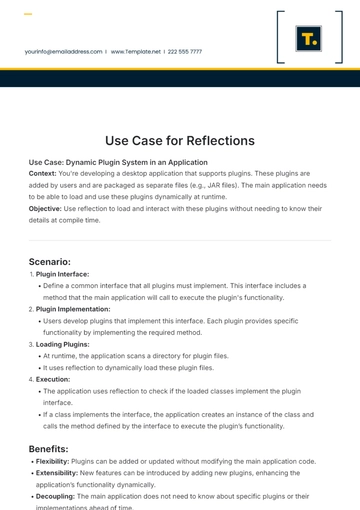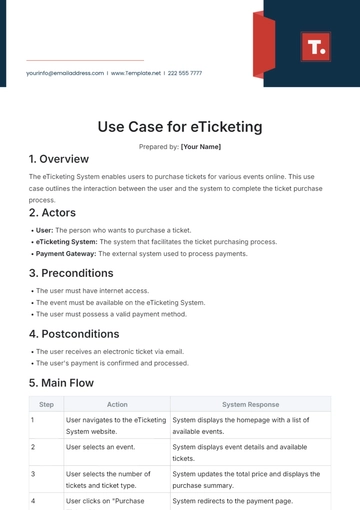Business Use Case
I. Use Case Identification
II. Use Case Description
This section describes the interactions and processes involved in handling customer orders within [Your Company Name].
Goal: To efficiently process customer orders through [Your System Name].
Scope: Order management system
Level: High-level business process
Postconditions:
Order is processed and logged.
Inventory levels are adjusted.
Customer receives order confirmation and shipment tracking details.
III. Actors
IV. Stakeholders and Interests
Customer: Wants a seamless ordering and delivery experience.
Sales Representative: Needs an efficient system to manage customer interactions and transactions.
Inventory Manager: Interested in accurate inventory management and notification of low stock levels.
V. Use Case Triggers
VI. Main Success Scenario (Basic Flow)
Customer selects products and completes the order form.
The system validates available inventory and confirms product availability.
Customer enters payment information; the system processes the payment.
Sales Representative reviews and approves the order.
The system updates inventory levels and generates a packing slip.
The system sends an order confirmation and tracking details to the customer.
Inventory Manager receives notification of inventory changes.
VII. Extensions (Alternative Flows)
VIII. Special Requirements
IX. Assumptions
X. Frequency of Use
XI. Miscellaneous
Use Case Templates @ Template.net
